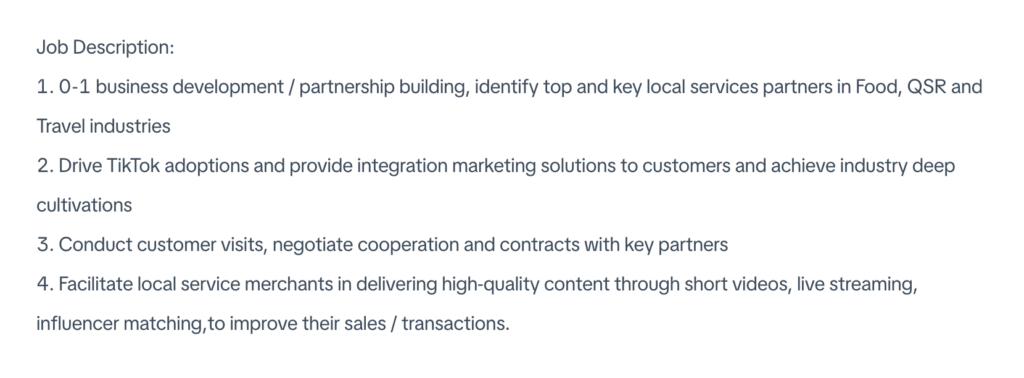36Kr has exclusively learned that TikTok is testing local services overseas, starting with Southeast Asia, with operations already launched in Indonesia and Thailand.
A source involved in TikTok’s e-commerce services in Indonesia disclosed to 36Kr that TikTok’s local services are still in the internal testing phase. Only a select group of users can see related group-buying packages in their feeds, primarily from dining merchants. Seizing this new opportunity, the source has begun expanding into local services, establishing connections with local influencers, and building a dedicated team.
On TikTok, some Thai accounts are already calling for merchants to join TTLS, representing “TikTok Local Services,” promoting it as a new business opportunity.
36Kr also found dozens of job postings related to local services on TikTok’s recruitment website, with positions in Singapore, Jakarta, and Bangkok. Roles span ecosystem management, strategic analysis, product management, and business development sales.
For example, a business development lead position in the Jakarta office involves responsibilities such as developing business from scratch in sectors like dining and tourism, identifying key partners, and providing clients with integrated marketing solutions.

From e-commerce to local services, ByteDance’s ventures in the Chinese internet sector have demonstrated the value of these two monetization methods for a short video content platform. In 2023, Douyin’s e-commerce gross merchandise value (GMV) reached RMB 2.7 trillion. According to LatePost, its local services business has also achieved a GMV of RMB 310 billion after three years.
TikTok’s overseas growth mirrors Douyin’s domestic success. According to YipitData, TikTok’s global e-commerce GMV reached USD 13.6 billion in 2023, with over 90% contributed by Southeast Asia. Given the platform’s local influence and the similarity of consumer markets, Southeast Asia is the ideal region to pilot local services.
Official data shows that Southeast Asia has nearly 700 million people, with over 50% under the age of 30. High penetration of online payments, unique culinary cultures fostered by the tropical climate, a thriving service industry due to cheap labor, and abundant natural and cultural tourism resources are all potentials for the local services sector.
However, the development of local services relies on robust infrastructure. A person close to TikTok revealed that the platform has long intended to enter local services overseas, but the local supply chain is challenging, hence the focus on building infrastructure first.
Southeast Asia’s transportation and logistics systems are still underdeveloped, limiting the expansion of chain businesses and causing an immature supply side for local services. For instance, in 2023, the chain rate of dining establishments was only one-third of that in the US. A sizable number of dining outlets lag in hygiene and safety standards compared to those in more developed nations, lacking standardized and innovative new products.
The challenge for TikTok is substantial. Local services involve a significant amount of real location-based data and this need intertwines the digital platform more deeply with the local economies than its content and e-commerce arms. This deeper integration introduces additional regulatory risks, which could be a significant hurdle as TikTok expands its local services.
KrASIA Connection features translated and adapted content that was originally published by 36Kr. This article was written by Zhang Rao for 36Kr.

